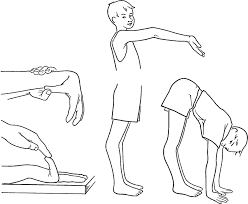Not known Facts About Joint Hypermobility Syndrome Treatment - NYC - NYDNRehab

Not known Incorrect Statements About The Darker Side of Hypermobility
A group of five sugars discovered in particular foods is gotten rid of from your diet plan. These sugars are lactose, fructose, fructans, galactans and polyols. FODMAP represents fermentable, oligosaccharides, disaccharides, monosaccharides and polyols. How do I look after myself? If you have joint hypermobility syndrome, it is very important to preserve a healthy way of life and protect your joints.


Joint Hypermobility Syndrome: Yoga's Enigmatic Epidemic?

3 Ways to Deal with Hypermobility Syndrome - wikiHow
Taking regular breaks while exercising. Eating a healthy diet. Wearing encouraging shoes. Alleviating joint pain and tightness with warm baths. Not overextending your joints on purpose. Joint hypermobility syndrome is a connective tissue disorder. You Can Try This Source are double-jointed or have very versatile joints. But when you have really versatile joints together with discomfort and other symptoms, it might be joint hypermobility syndrome.
While there's no cure, symptoms can be managed by keeping your joints strong and taking medication. Talk to your doctor if you have serious symptoms. They can help you manage this condition.
What are hypermobile joints? If you have hypermobile joints, you're able to extend them quickly and painlessly beyond the regular variety of motion. Hypermobility of the joints occurs when the tissues holding a joint together, generally ligaments and the joint capsule, are too loose. Typically, weak muscles around the joint likewise add to hypermobility.

Benign Congenital Hypermobility – Caring Medical Florida
Facts About A to Z: Benign Joint Hypermobility Syndrome (for Parents) Uncovered
A child with hypermobile joints might lose the capability to hyperextend as they age. Having joint hypermobility may likewise be called: having joint laxity, or hyperlaxitybeing double-jointedhaving loose jointshaving hypermobility syndrome, A lot of frequently, hypermobile joints appear with no hidden health conditions. This is called benign hypermobility syndrome because the only sign is hypermobile joints.
This is called joint hypermobility syndrome. In unusual cases, hypermobile joints occur due to a hidden medical condition. Conditions that might possibly trigger hypermobility include: Down syndrome, which is a developmental disabilitycleidocranial dysostosis, which is an inherited bone development disorderEhlers-Danlos syndrome, which is an inherited syndrome impacting flexibilityMarfan syndrome, which is a connective tissue condition, Morquio syndrome, which is an inherited condition that impacts metabolism, Usually, people with hypermobile joints don't have other symptoms, so they do not need treatment for their condition.
